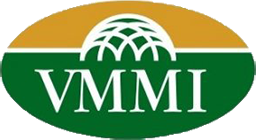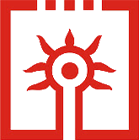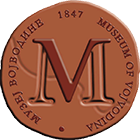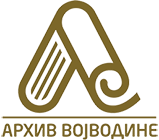SETTLEMENT
Ruthenians have been living in the territory of present-day Serbia for more than 260 years. In their rich tradition, 17th January, 1751 is remembered as a special date. On that day, Franz Joseph de Redl, Advisor to Empress Maria Theresa and Administrator of the Royal State District of Bačka in Sombor, signed the first official document – Agreement on the Settlement of 200 Ruthenian Greek-Catholic families on the Veliki Krstur Heath of the time. According to the provisions of this Agreement, the colonists had to be Ruthenians (Ruthenes) by nationality, free people by status, and Greek-Catholics by religion.
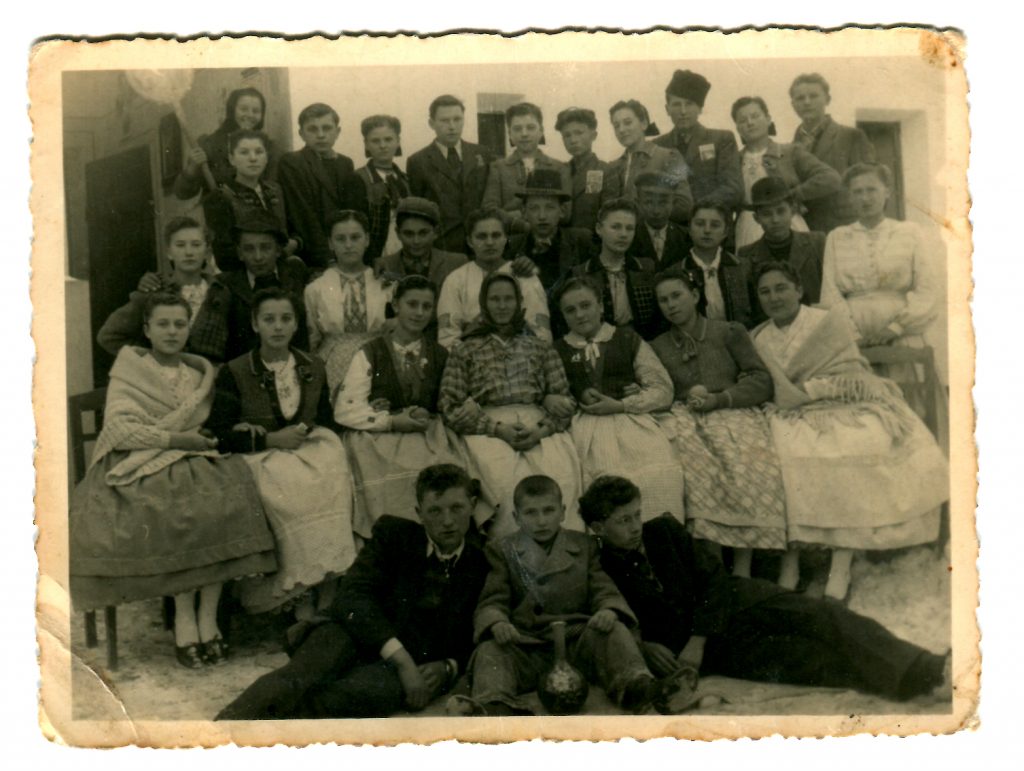
It was the official beginning of today’s Ruski Krstur, the oldest, largest and most famous place of Ruthenians in Vojvodina and Serbia. That is why this date was chosen as our national holiday. The first Ruthenian settlers individually began arriving in Bačka as early as the mid-1720s, but only one census from 1746 testifies to the presence of a large number of Ruthenian families not far from Krstur.
Their settlement was related to general circumstances. After the end of the Austro-Turkish wars of 1739, the Habsburg Monarchy came to the estates of the fertile, but not quite desolate, territories of southern Hungary. It was then decided to settle them and rebuild them economically.
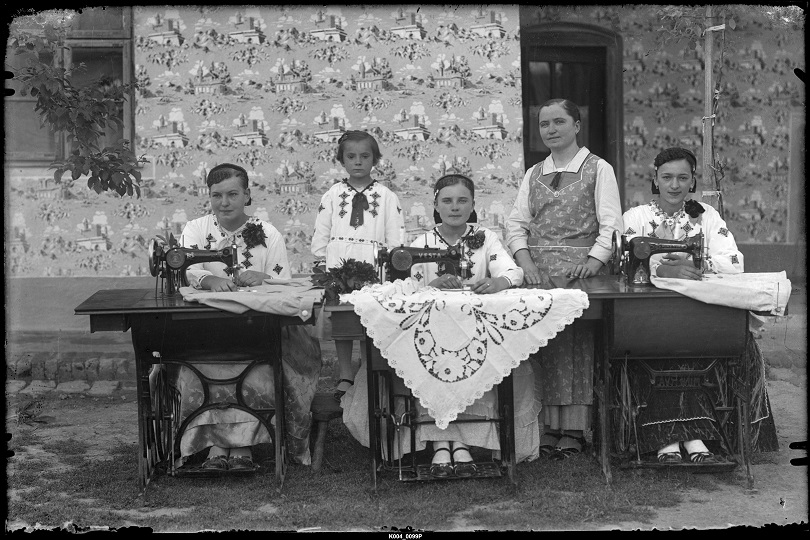
Among the peoples who arrived and laid their roots on the fertile Plain of Vojvodina were the Ruthenians. They emigrated from the northeastern counties of what was then Hungary, from areas nowadays in eastern Slovakia, the Transcarpathian region of Ukraine and Hungary. Under similar conditions, on 15th May, 1763, a document was signed in Sombor to settle in another Ruthenian place – Kucura.
The hard-working inhabitants of these two Bačka settlements with the first 350 families, together with the new settlers from the old part of Hornjica (upper regions of Austria-Hungary), over time grew into the national community of Ruthenians in Vojvodina. In the second half of the 18th century the inhabitants of these settlements grew in numbers. Due to the lack of land, the whole of the 19th and the beginning of the 20th centuries were marked by the expulsion of the Ruthenians from Ruski Krstur and Kucura into the Bačka and Srem plain, where about ten new Ruthenian colonies were symbolically started.
RELIGION
Since the beginning of the Ruthenian settlement in Bačka, the Greek-Catholic Church has played a special role. Greek-Catholics acknowledge the Roman Catholic Pope as their spiritual leader, cherishing the Eastern rite and customs, and they use Church Slavic books, and priests have the right to marry.
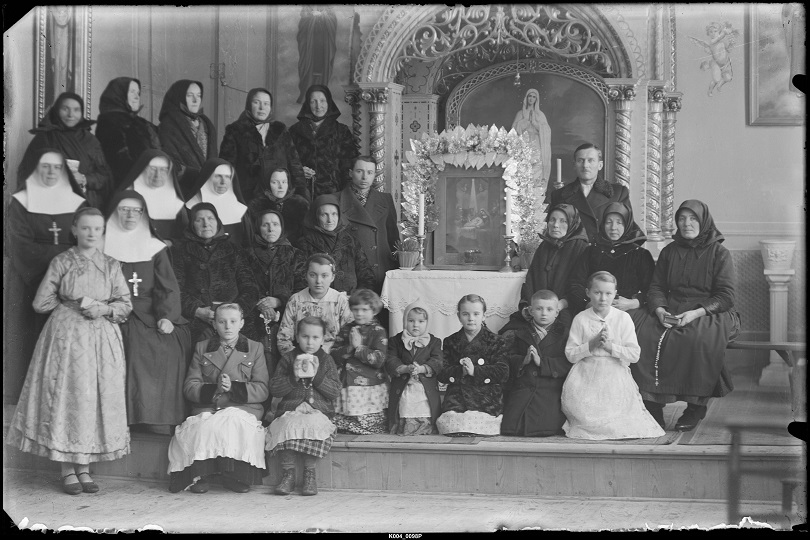
Social life of the community took place around the parishes, which were the foundation for the new Ruthenian colonies. The first parish was founded in Ruski Krstur in 1751, and just two years later, a school that can today boast a 266-year tradition. In 1777, a bishopric was established for all Greek-Catholics in this part of the Habsburg Monarchy, whose headquarters were in Križevci.
In terms of church organization, the Ruthenians have been members of the Apostolic Exarchate for Greek-Catholics in Serbia and Montenegro since 2003, and since 2008 only for Serbia, which in 2018 was raised to the level of the diocese under the official name: Greek-Catholic Diocese of St. Nicholas in Ruski Krstur.
COLONIES
fter Krstur and Kucura, the oldest Ruthenian colony was created in the urban environment in Novi Sad, where the third Ruthenian parish in Bačka was founded in 1780. The Ruthenian began settling in estate of the Bishop of Križevci in Šid in 1803. After the Revolution of 1848/9, new colonies were formed in Berkasovo and Vrbas, and since the 1880s, the number of Ruthenians in Ɖurđevo and Gospođinci started to increase. Ruthenian settlements in Bačinci, Bikić Dol and Sremska Mitrovica also started to form. Ruthenians settled in Novo Orahovo after the World War II, and more members of our community began to appear in Subotica.
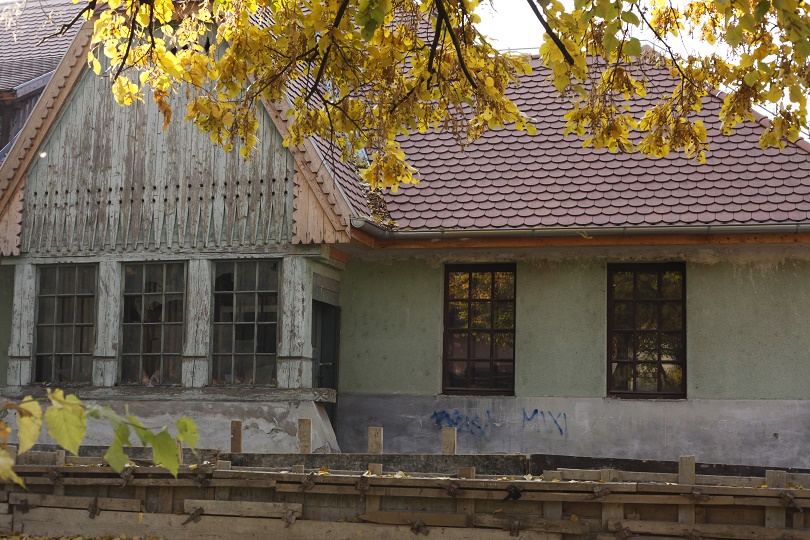
POPULATION DATA
The 1848 census says that the Ruthenian community counted 8,500 souls. According to the first state census of the Kingdom of the SHS in 1921, there were 20,383 Ruthenians, and in 1971 there were 24,640 Ruthenians in Yugoslavia. In the census of 2002, there were 15,905 citizens who declared themselves as Ruthenian in Serbia, which comprises 0.2% of the population of the Republic of Serbia. Out of all the settlements inhabited by Ruthenians, Ruski Krstur and Kucura remained the two biggest and most significant Ruthenian centres. Krstur, a village with 6,000 residents, with its educational, cultural and ecclesiastical institutions, presents the heart of Ruthenians in Serbia. Today Kucura has about 5,000 inhabitants, out of whom about 3,000 are Ruthenians.
LANGUAGE AND SCRIPT
Historically, the Ruthenians belong to the Eastern Slavs. In the Middle Ages the name Rusnaci (Rusyns) was used for all inhabitants of Kievan Rus. Borders and states changed through the centuries. In the 19th century, this ethnonym defined all the Eastern Slavic subjects of the Habsburg Monarchy who lived in Galicia and northeastern Hungary. Ruthenians call their language “Russian” and write in Cyrillic. Anyone who knows the Ruthenian language can easily understand all Slavic languages, especially the languages of the Carpathian area.
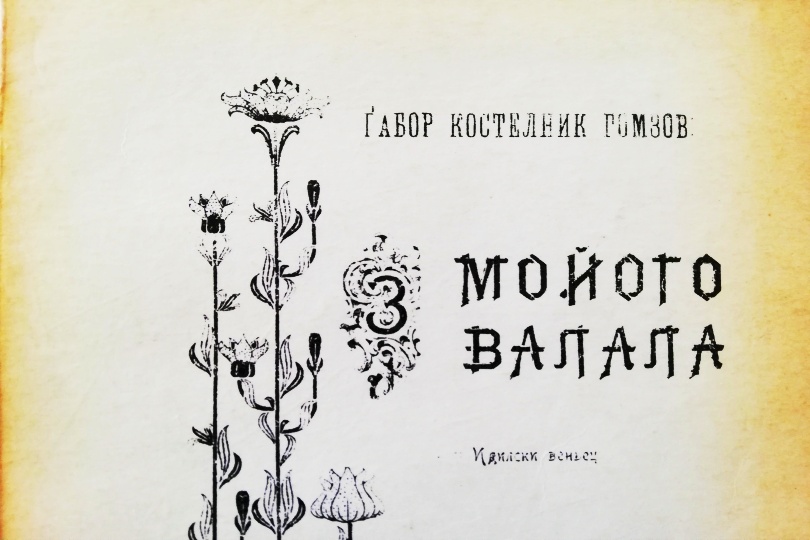
For over a century, Ruthenians have been publishing books in their vernacular. The language of Ruthenians in Serbia today is considered to be the youngest Slavic literary language. For this, the Ruthenians should thank the work of Havrijil Kosteljnik, who was born in 1886 in Ruski Krstur. He was one of the most educated and renowned Ruthenians of Vojvodina – a priest, doctor of philosophy, university professor and writer. Although he spent most of his tumultuous life in Lviv, he had a crucial influence on the cultural and national development of the Ruthenians of Vojvodina. As a high school student, in 1904 the young Kosteljnik published the poetic wreath From My Village. The work is written in the vernacular and is the foundation of artistic literature at Ruthenians in Vojvodina.
In 1923, he also compiled a Grammar of Bačka-Ruthenian speech and thus codified the language of the present-day Ruthenian community in Serbia. Kosteljnik wrote in five European languages and published over twenty books. What he created in the Ruthenian language became the foundation of the Ruthenian culture and national identity in Vojvodina.
CULTURAL REVIVAL
During the tumultuous changes that occurred after the end of the First World War, as many as 21 representatives from Ruthenian communities in Bačka participated in the Great National Assembly, held in late 1918 in Novi Sad, when the accession of present-day Vojvodina to the Kingdom of Serbia was proclaimed. The parish priest of the Greek-Catholic Church in Novi Sad, Jovan Hranilović, was the first chairman at the Grand National Assembly.
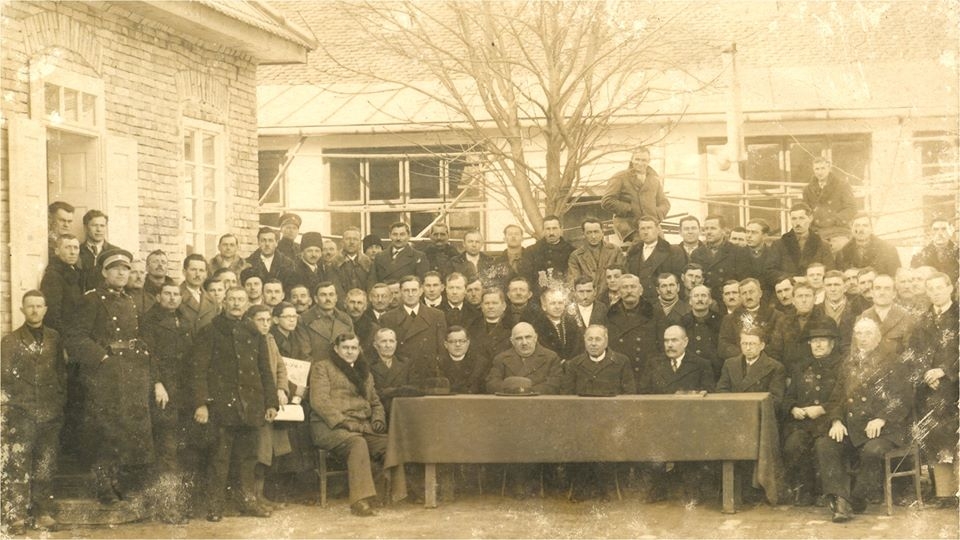
Shortly after the event, the Bačko-Srem Ruthenians convened their first assembly, at which they founded the Ruthenian People’s Education Society – the Enlightenment (“Prosveta”). The Assembly was held on 2nd July, 1919 in Novi Sad. With the creation of the first Yugoslav state, this small community experienced its own cultural and national revival. Materially, especially, aided and abetted by the clergy during this period, the Enlightenment published textbooks, books, journals and organized cultural life.
The nurturing of national culture and art at Ruthenians has had a long tradition. In places where Ruthenians live, there are cultural and artistic societies that organize traditional cultural manifestations of wider significance. All Ruthenian programs in Serbia are united and coordinated by the National Council of Ruthenian National Communities.
In order to preserve, promote and develop the culture of the Vojvodinian Ruthenians, the APV Assembly and the National Council of the Ruthenian National Community established the Institute for the Culture of the Ruthenian Ruthenians in 2008.
MEDIA
“Ruski novini” (Ruthenian Newspaper) started to be published in 1924, and in 1937 the children’s supplement “Naša zahradka” (Our Little Garden). The first “Ruthenian Calendar” was published in 1921. In its twenty years of publishing, it has created a significant educational role for the people who mainly dealt with the cultivation of land but respected the written word. The pages of these publications developed a literary life and a new generation of Ruthenian intelligence grew.
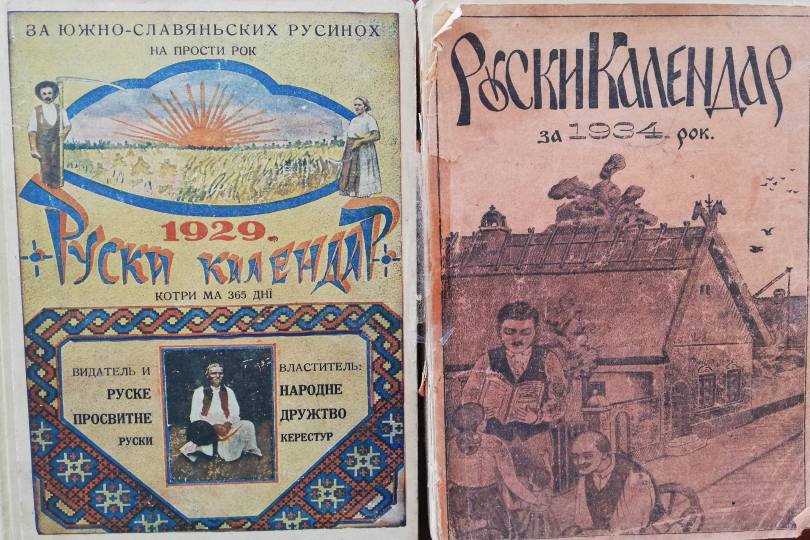
On 3rd September, 1933, the Cultural and Educational Union of the Yugoslav Ruthenians (KPSJR) was formed in Stari Vrbas which in April 1934 launched its “Zarja” newspaper, which was published until 1941, during which time it changed its name several times.
After the Second World War ended, the development of the Ruthenian community continued, but under other conditions and with the assistance of the state. In 1945 itself the work of the Ruthenian newspaper “Ruski novini” was renewed under the new name “Ruske slovo”. The “Ruske slovo” Newspaper Publishing Institution, headquartered in Novi Sad, was founded when the newspaper of the same name was founded. It published several magazines and periodicals such as the Journal of Literature, Culture and Art “Švetlosc”, the Magazine for Children “Zahradka” and the Cultural and Political Magazine for Youth “MAK”.
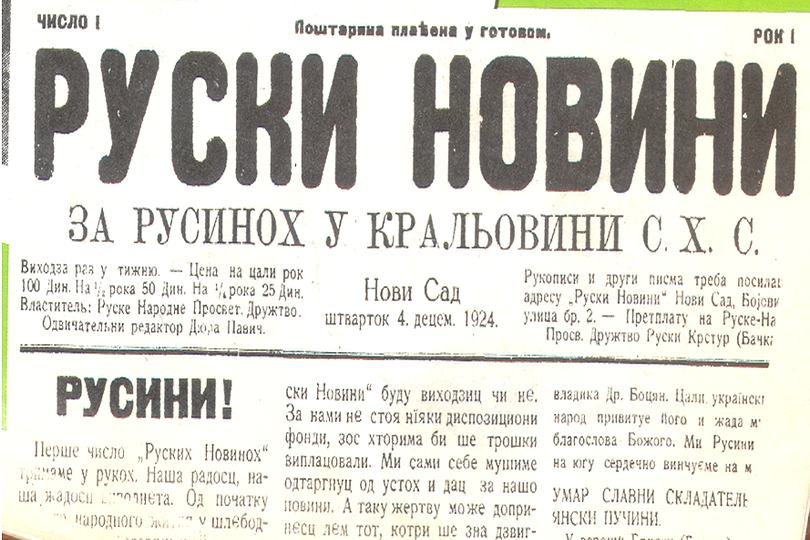
NIU “Ruske slovo”, Institute for Textbook Publishing in Belgrade – Department in Novi Sad, Society for Ruthenian Language, Literature and Culture and other publishers, as well as the Greek-Catholic Church, have published more than 600 titles in the Ruthenian language since 1945 until today.
The Ruthenian community in Serbia also has a network of electronic media. Thus, within the system of the Broadcasting Institution of Vojvodina, within the framework of the Public Service, the Ruthenians have had their own editorial office since 1948, within the Radio Novi Sad and television editorial office since 1975, and broadcast programmes daily. Today there are also several Ruthenian newsrooms, or programmes in local radio stations.
EDUCATION
The first Ruthenian Grammar School was established in Krstur in 1945 which still exists today. Staff from that high school are the bearers of most of the general development activities at Ruthenians, and especially in education and culture.
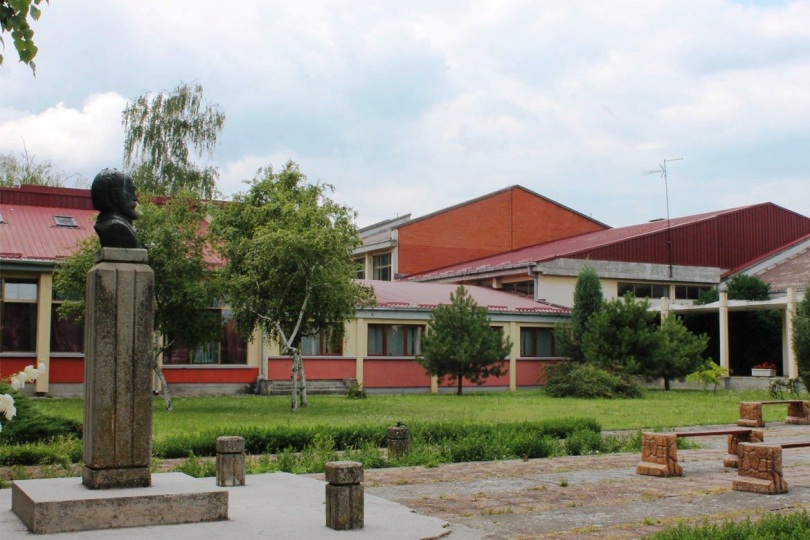
In 1981, the Department of Ruthenian Language and Literature was opened at the Faculty of Philosophy in Novi Sad, which is today called the Department of Ruthenian Studies. By 2009, 32 students had graduated. Regular teaching in Ruthenian language is organized today in three schools: in Ruski Krstur, Kucura and Ɖurđevo. The Society for Ruthenian Language, Literature and Culture (founded in 1970), in cooperation with the Ministry of Education of the Republic of Serbia and the National Council of the Ruthenian National Community, organizes facultative studies of Ruthenian language with elements of national culture in schools where there is no regular teaching in Ruthenian.
RUTHENIANS IN SERBIA TODAY
Ruthenians today can boast an enviable number of intellectuals and artists working and creating across our country. Most prominent among them are members of the Serbian Academy of Sciences and Arts, the Vojvodina Academy of Sciences and Arts, the National Academy of Sciences of Ukraine and the World Academy of Ruthenian Culture. The value of Ruthenian creators is evidenced by the numerous recognitions and awards of the Republic of Serbia, which are awarded for high scientific and artistic achievements. Among the Ruthenians today there is a respectable number of Doctors and Master of Science at universities in Novi Sad and Belgrade, a significant number of physicians, engineers, professors, writers, journalists, musicians, actors and athletes who are respected in the wider community as well.

Today, in the Republic of Serbia and its northern province of Vojvodina, Ruthenians represent a small, but traditionally and culturally distinctive, national community. Thanks to its two-and-a-half centuries of existence in the southern part of the Pannonian Plain, Vojvodina’s Ruthenians consider Serbia their homeland. At the same time, Ruthenians are also intermediaries in Serbia’s relations with the regions and countries of Central and Eastern Europe, where their historical roots are located.











